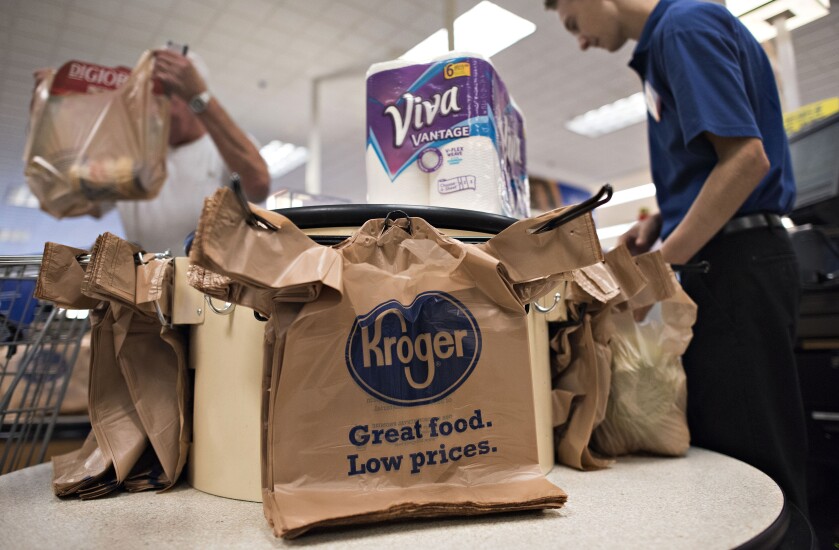

The digital fridge
ShopRite and FreshDirect are the earliest adopters of
Groceries by Mastercard will also learn a family's shopping habits and make personalized suggestions on items and brands. Mastercard partnered with MyWebGrocer, which provides e-commerce and marketing for more than 130 grocers and 500 consumer packaged goods brands, to expand the options for shopping from the fridge.
That said, there is a steep cost of entry: Samsung's refrigerator was priced at $3,200, due in part to its inclusion of a 21.5 inch touchscreen interface.

Kroger ClickList
"They're all trying to do what we are already doing, which is using digital to make it faster and easier to shop," said
Kroger ClickList enables people to order groceries online, choose a pickup time and retrieve items at the store. But it's not skimping on the personal touch. A store employee greets the shopper and helps load the groceries.
"ClickList makes it easier for customers to engage with us," Hanna said. "They are extremely busy and have children and parents, jobs, etc. The digital platform helps make the grocery experience a lot easier."

Walmart's cars and kiosks
The retail giant is testing a system for using unmanned kiosks to deliver grocery orders. Unlike Amazon, the system doesn't restrict the window of pickup. The kiosk is available 24 hours a day, and customers retrieve their order by punching in a five-digit PIN, according to the article. The kiosks are still in testing, and the service is free but requires a $30 minimum purchase.
For those who can't stop by a kiosk, however, Walmart is also working on an elaborate system that allows employees to deliver groceries as they drive home.
“Not only can this cut shipping costs and get packages to their final destinations faster and more efficiently, it creates a special win-win-win for customers, associates and the business,” wrote Marc Lore, president and CEO of Walmart U.S. eCommerce, in an official
Walmart associates are fully in control of the experience and participation is optional. If they choose to opt in, associates choose how many packages they can deliver, the size and weight limits of those packages and which days they’re able to make deliveries after work. Walmart is initially piloting in two locations in New Jersey and one in northwest Arkansas.
Where Walmart’s plan could prove compelling is in its ability to reach rural America.
Amazon’s delivery coverage focuses on

Shipt ahoy
The online grocery contender Shipt, based in Birmingham, Ala., recently raised an additional $40 million in funding from previous backers Greycroft Partners, e.ventures and Harbert Venture Partners. Unlike the AmazonFresh Pickup model, which lets customers set a time of their choosing to get their groceries from an Amazon location, Shipt suggests delivery windows and works with local grocery chains, according to the article, which notes Shipt and AmazonFresh are about the same size. Shipt has an annual membership fee but does not charge a per-order fee.

Beacon and eggs
That's where
The companies use beacon technology to communicate with shoppers as they navigate the store, using the Allrecipes Dinner Spinner app to promote trending recipes.
Marc's has 58 stores in Ohio.

Robo-grocer
Though the concept is being tested in Shanghai, the ultimate purpose of the Moby store is to maintain a retail presence in regions that don't have a strong enough economy to support a permanent grocery store. And in its current form, the "self-driving" store still needs a human driver to return it to a warehouse.

Faster food
A growing number of restaurants are implementing mobile ordering systems, a technology that has proven so popular at Starbucks that the company has struggled to accommodate the influx of traffic at its stores.
Other brands are learning from this example, however.
Last year, Subway acquired a portion of Vancouver-based digital ordering company





